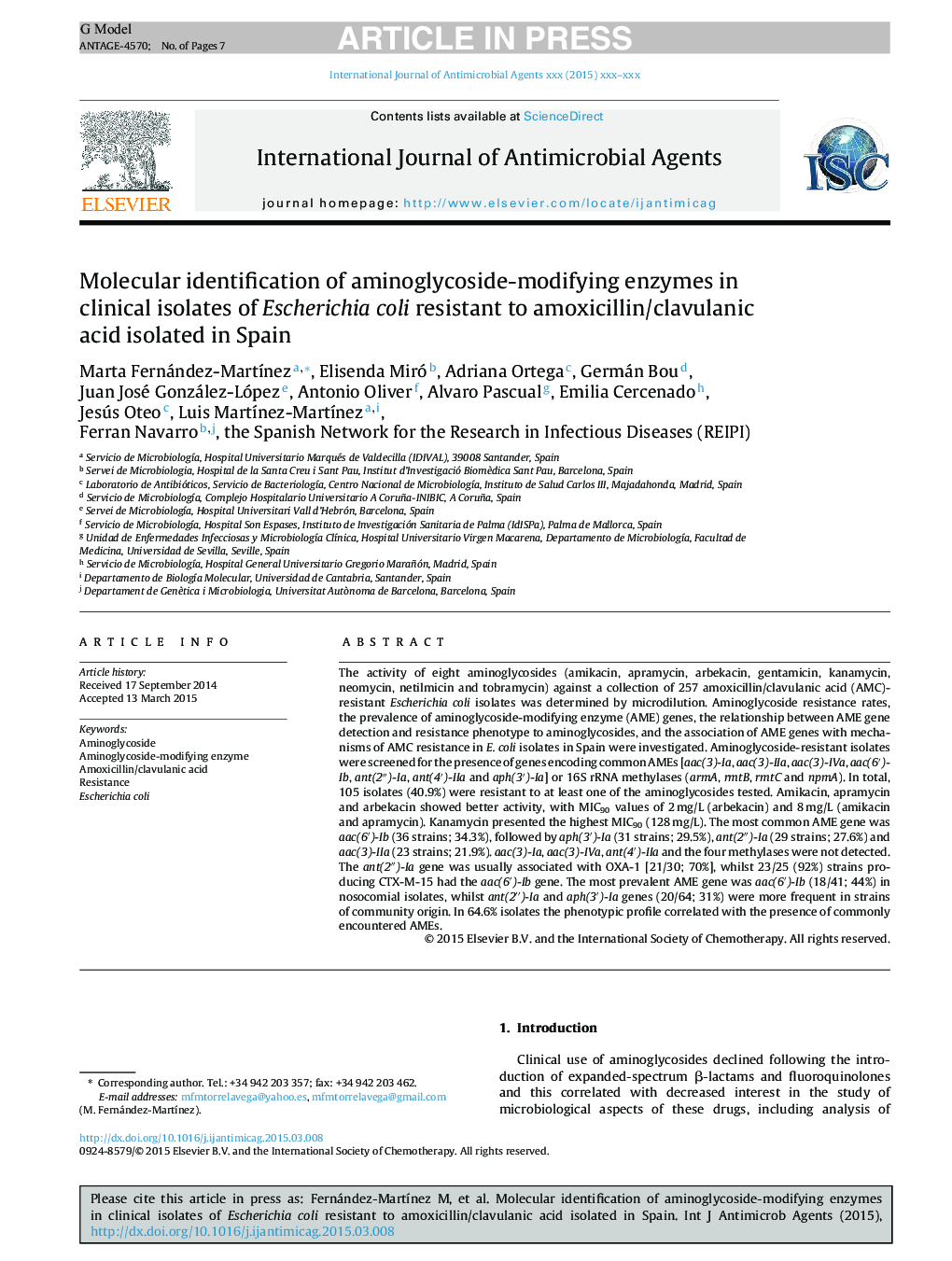| Article ID | Journal | Published Year | Pages | File Type |
|---|---|---|---|---|
| 6117711 | International Journal of Antimicrobial Agents | 2015 | 7 Pages |
Abstract
The activity of eight aminoglycosides (amikacin, apramycin, arbekacin, gentamicin, kanamycin, neomycin, netilmicin and tobramycin) against a collection of 257 amoxicillin/clavulanic acid (AMC)-resistant Escherichia coli isolates was determined by microdilution. Aminoglycoside resistance rates, the prevalence of aminoglycoside-modifying enzyme (AME) genes, the relationship between AME gene detection and resistance phenotype to aminoglycosides, and the association of AME genes with mechanisms of AMC resistance in E. coli isolates in Spain were investigated. Aminoglycoside-resistant isolates were screened for the presence of genes encoding common AMEs [aac(3)-Ia, aac(3)-IIa, aac(3)-IVa, aac(6â²)-Ib, ant(2â³)-Ia, ant(4â²)-IIa and aph(3â²)-Ia] or 16S rRNA methylases (armA, rmtB, rmtC and npmA). In total, 105 isolates (40.9%) were resistant to at least one of the aminoglycosides tested. Amikacin, apramycin and arbekacin showed better activity, with MIC90 values of 2Â mg/L (arbekacin) and 8Â mg/L (amikacin and apramycin). Kanamycin presented the highest MIC90 (128Â mg/L). The most common AME gene was aac(6â²)-Ib (36 strains; 34.3%), followed by aph(3â²)-Ia (31 strains; 29.5%), ant(2â³)-Ia (29 strains; 27.6%) and aac(3)-IIa (23 strains; 21.9%). aac(3)-Ia, aac(3)-IVa, ant(4â²)-IIa and the four methylases were not detected. The ant(2â³)-Ia gene was usually associated with OXA-1 [21/30; 70%], whilst 23/25 (92%) strains producing CTX-M-15 had the aac(6â²)-Ib gene. The most prevalent AME gene was aac(6â²)-Ib (18/41; 44%) in nosocomial isolates, whilst ant(2â³)-Ia and aph(3â²)-Ia genes (20/64; 31%) were more frequent in strains of community origin. In 64.6% isolates the phenotypic profile correlated with the presence of commonly encountered AMEs.
Keywords
Related Topics
Life Sciences
Immunology and Microbiology
Applied Microbiology and Biotechnology
Authors
Marta Fernández-MartÃnez, Elisenda Miró, Adriana Ortega, Germán Bou, Juan José González-López, Antonio Oliver, Alvaro Pascual, Emilia Cercenado, Jesús Oteo, Luis MartÃnez-MartÃnez, Ferran Navarro,
